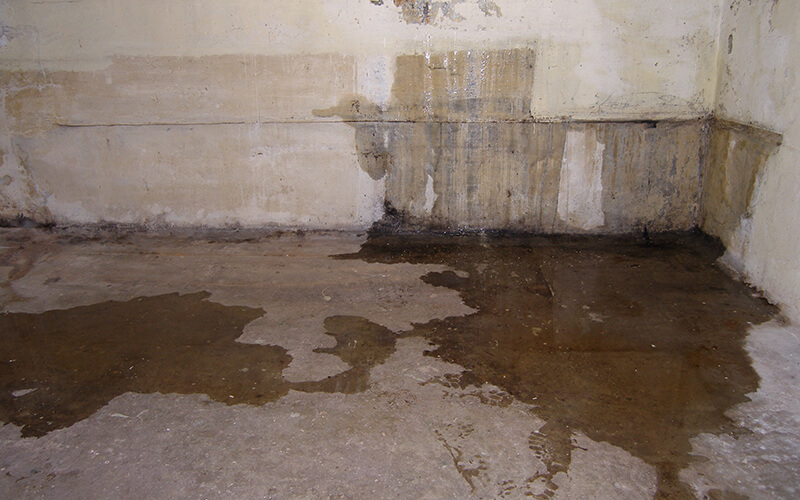There are multiple reasons for your foundation walls to crack and give you water damage problems. It could be the shifting earth causing the house to move or settle, rock pockets in the wall which overtime let water enter your basement, or shrinkages from concrete curing. Whatever the case may be, one thing is certain cracks on the inside, or the outside of your foundation walls would give you a headache if left alone.
Leaking walls can form for various reasons and come from various sources, and not all repairs are the same or as reliable. This article would look into wall crack repairs, precisely the difference between using a polyurethane injection method and an epoxy injection method.
Polyurethane Crack Injection
Typically, polyurethane is used for non-structural cracks such as vertical and diagonal cracks less than a quarter of an inch wide. Polyurethane injections could be done by either low pressure or “surface port” injections (around 20 – 40 psi) or at high pressure (usually between 1500 – 3200 psi).
Surface port or low-pressure injections involve the use of surface-mounted injection ports to insert polyurethane into cracks. Meanwhile, high-pressure injection uses an electric injection pump to fill the voids in walls with activated polyurethane.
The material fills the cracks through the foundation wall’s entire thickness and expands 5-10 times its original volume. This effectively creates an airtight and waterproof seal. Its flushing process, which cleans out the crack, allows the material to adhere to the concrete wall.
Advantages Of Polyurethane Crack Injection
- Polyurethane injection’s flushing process cleans out cracks before injection, making it ideal to use regardless of the crack and the weather condition.
- The expansion of the polyurethane makes it effective for filling the void within your foundation wall’s width.
- The high-pressure method of injecting polyurethane allows you to fill very fine cracks and pores associated with concrete.
- Meanwhile, low-pressure polyurethane crack injection provides you or the technician with visual confirmation that the crack has been filled completely.
- Water accelerates the curing process for polyurethane, making it beneficial for actively leaking cracks flooding the basement.
Disadvantages Of Polyurethane Crack Injection
- In some cases where cracks are exposed to excessive tension, unreinforced polyurethane would tear, allowing water to seep inside.
- Improper formulation of polyurethane could lead to a powdery or rigid material unsuitable to cracks. So, before making a DIY, you could seek professional help to get better results.
Epoxy Crack Injection
Like Polyurethane injections, epoxy injections could also be applied using low-pressure injections. Epoxy typically works better on horizontal cracks wider than a quarter of an inch. These types of cracks indicate a potential structural issue requiring the added strength of epoxy.
Unlike polyurethane, the epoxy injection does not expand like foam and would not become flexible. The material fuses the crack back together, creating a bond strength much greater than the foundation wall.
Advantages Of Epoxy Crack Injection
- Cured epoxy typically has a tensile strength of around 7000 psi greater than that of concrete at around 300-700 psi. This makes epoxy ideal for structural crack repairs for foundation walls.
- Epoxy can withstand contractions due to thermal cycling or excessive loading of the foundation.
- Like polyurethane, low-pressure epoxy injection provides you or the technician with confirmation that material filled the cracks completely.
- You could also use varying viscosities with variable curing time to fill cracks ranging from very fine to very wide.
- You could also use carbon fiber along with epoxy injection for further reinforcement of your foundation wall.
Disadvantages Of Epoxy Crack Injection
- Moisture, wet surfaces, or actively leaking cracks would prohibit the epoxy paste from adhering to the inside surfaces of cracks, making it unreliable. These conditions would also create an insufficient bond strength between the injection port and the wall surface.
- You cannot reinject epoxy to previously injected cracks that remain leaking. In cases such as failed crack repairs with epoxy, you could use polyurethane to fill the remaining voids remaining.
- The varying viscosities of epoxy could also pose a problem as it may take hours for the epoxy to cure completely. You would need to make sure that the containment on both sides of the wall does not have any gaps, as epoxy could bleed through, rendering your efforts useless.
Still, wondering whether to use polyurethane injection or epoxy injection? In any case, you should consider the characteristics of the cracks and each injection carefully as both would dictate which method to use. However, the best way to determine which method to use is to ask experienced professionals for help. This would save you time and reduce the risk of your repairs failing.
On a side note, it is better to combine different methods of waterproofing, such as drain tiles, with wall crack injections to mitigate or prevent any water damage problems in your basement.

